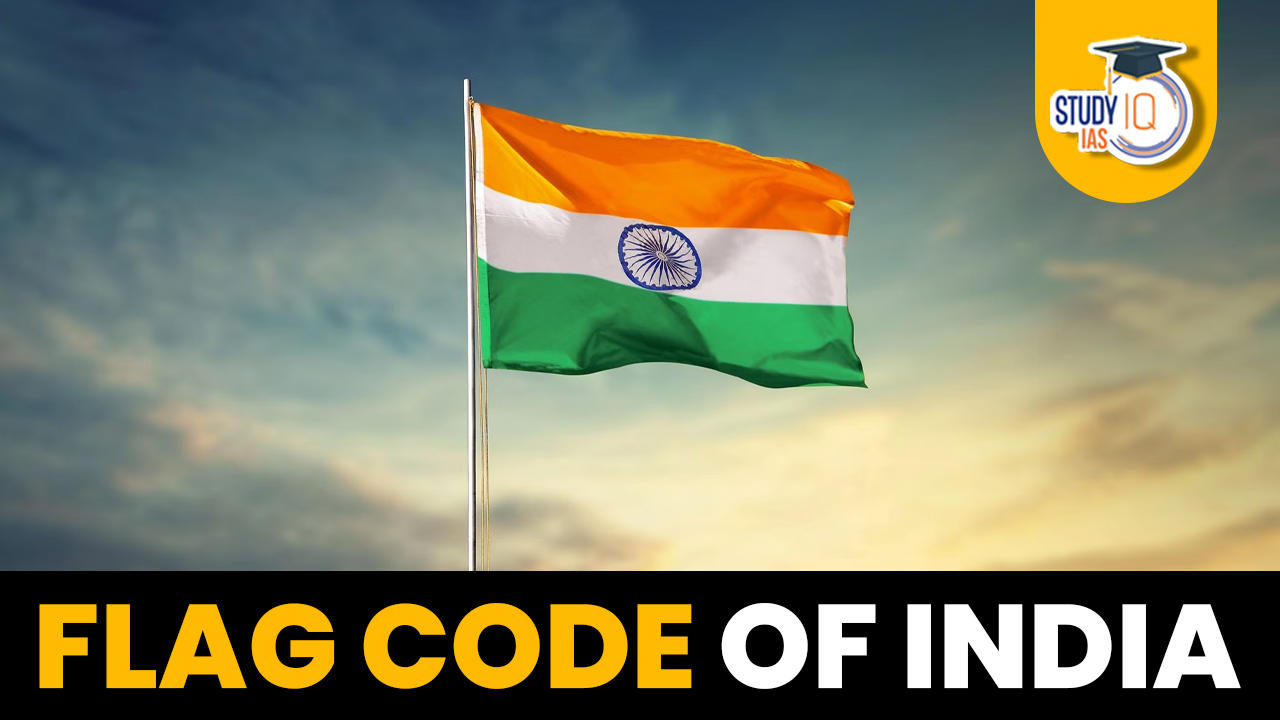Table of Contents
Flag Code of India 2002
The Indian National Flag represents the hopes and aspirations of the people of India. It is the symbol of our national pride and there is universal affection and respect for, and loyalty to, the National Flag. It occupies a unique and special place in the emotions and psyche of the people of India. The Flag Code of India is the set of rules and regulations, practices and guidelines that apply to the display of the national flag of India. The Flag Code for India 2002 is classified into three sections:
- National Flag general description
- Display of National Flag by Institutions such as Educational, Public, Private etc.
- Display of National Flag by Central Government as well as State Governments and their agencies as well.
History of Indian Flag Code
The history of Indian Flag Code is closely tied to the evolution of the national flag itself and the principles of respect and honour associated with it. Initially, the Emblems and Names (Prevention of Improper Use) Act, of 1950 as well as the Prevention of Insults to National Honour Act, of 1971 governed the display of National Flag in India. As an attempt to bring both the above-mentioned law together, the Flag Code of India 2002 was framed. Advocate B. M. Birajdar said, “The Flag Code of India 2002 permits the unrestricted display of the tricolour, consistent with the honour and dignity of the flag,”. Here is a brief overview of the history of the Indian Flag Code:
Origins of the Indian National Flag
The design of the Indian national flag was adopted by the Constituent Assembly of India on July 22, 1947, shortly before India gained independence from British colonial rule. The flag features three horizontal stripes of saffron (top), white (middle), and green (bottom), with a blue Ashoka Chakra (wheel) with 24 spokes in the centre of the white stripe. The colours and symbols of the flag hold significant meaning, representing various aspects of India’s heritage and culture, and aspirations.
Dimension of Indian National Flag

Dimension of Ashoka Chakra

Flag Code of India 2002 and 2022 Amendment
The hoisting/use/display of the Indian National Flag is governed by the Prevention of Insults to National Honour Act, 1971 and the Flag Code of India 2002. Some of the salient features of the Flag Code of India 2002 are listed below for the information of the public:
- The Flag Code of India, 2002 was amended vide Order dated 30th December 2021 and a National Flag made of polyester or machine-made Flag has been allowed. Now, the National Flag shall be made of hand-spun and hand-woven or machine-made, cotton/polyester/wool/silk khadi bunting.
- A member of a public, a private organization or an educational institution may hoist/display the National Flag on all days and occasions, ceremonial or otherwise, consistent with the dignity and honour of the National Flag.
- Flag Code of India Amendment 2022: The Flag Code of India, 2002 was amended vide Order dated 19th July 2022 and clause (xi) of paragraph 2.2 of Part-Il of the Flag Code of India was replaced by the following clause “where the Flag is displayed in open or displayed on the house of a member of the public, it may be flown day and night;”
- The National Flag shall be rectangular in shape. The Flag can be of any size but the ratio of the length to the height (width) of the Flag shall be 3:2.
- Whenever the National Flag is displayed, it should occupy the position of honour and should be distinctly placed.
- A damaged or dishevelled Flag shall not be displayed.
- The Flag should not be flown from a single masthead simultaneously with any other flag or flags.
- The Flag should not be flown on any vehicle except the dignitaries mentioned in Section IX of Part Ill of the Flag Code, such as the President, Vice-President, Prime-Minister, Governors etc.
- No other flag or bunting should be placed higher than or above or side by side with the National Flag.
Recent Changes on Flag Code of India 2002
The national flag can now remain hoisted at night as well which was recently announced by Indian Government, provided it is in the open and hoisted by a member of the public. Earlier, the tricolour could be hoisted only between sunrise and sunset. The flag code has already been amended by the government to permit the use of polyester and machine-made flags. The Ministry of Home Affairs amended the Flag Code of India 2002 to permit the flying of the national flag even at night as the government began a Har Ghar Tiranga campaign.





















 WhatsApp
WhatsApp